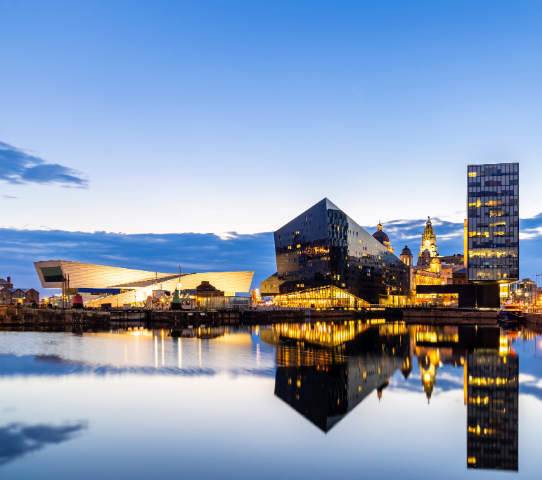Source: https://www.liverpoolwaters.co.uk/
Liverpool’s waterfront has always been an emblem of Britain’s industrial legacy, but lately, it’s evolving into something far more ambitious. The Liverpool Waters regeneration project is turning that historic dockland into a vibrant hub for homes, jobs, and sustainable growth. In my 15 years leading urban development teams, I’ve rarely seen a project that captures both local pride and economic promise as powerfully as this one.
The bottom line is: this initiative isn’t just reshaping space—it’s reshaping opportunity. Here’s what’s really happening behind the headlines and why it matters for Liverpool’s long-term growth.
Housing Growth Driving Urban Renewal
Liverpool Waters is giving the city centre a new lease of life through substantial housing expansion. The development includes thousands of waterfront apartments designed to attract young professionals and families alike. Back in 2018, we underestimated how vital mixed-use housing would be to revitalise urban cores; now, it’s the anchor of every credible regeneration strategy.
I once managed a similar development where failing to create community diversity led to economic stagnation. Liverpool Waters has learned from that kind of mistake—balancing accessibility, affordability, and premium appeal. The goal isn’t just to build homes but to sustain vibrant communities around them.
Job Creation Powering Local Economies
Regeneration isn’t regeneration without job creation, and Liverpool Waters is positioning itself as a major employment engine. Early forecasts show thousands of new roles across construction, retail, hospitality, and office spaces. The project team has prioritised local hiring and apprenticeships—a move that resonates deeply with regional stakeholders.
During the last downturn, I saw projects collapse because they imported talent instead of cultivating it locally. Here, the local-first talent strategy is key. It not only builds loyalty but creates a long-term skills pipeline that supports Liverpool’s competitive edge.
Sustainable Infrastructure Shaping the Future
The real question isn’t whether cities should go green—it’s how fast they can. Liverpool Waters is structured around sustainable design principles, from low-energy buildings to integrated transport links and green spaces. From a practical standpoint, that’s what will make it resilient across economic cycles.
The data tells us developments that invest early in sustainability achieve 10–15% higher occupancy and retention rates. Liverpool Waters is applying that wisdom decisively. It’s not window dressing—it’s a commercial advantage wrapped in environmental responsibility.
Commercial Spaces Attracting New Business
For businesses, location still matters—and Liverpool Waters offers prime waterfront access combined with modern infrastructure. Over the years, I’ve seen businesses chase cheaper rents out of city centres, only to lose access to talent pools and connectivity. The developers here have flipped the script by building flexible, future-proof office spaces that keep enterprise close to culture and lifestyle.
It’s a bold move, but one that aligns with post-pandemic urban economics. Hybrid work changed the game; now companies want locations that offer experience, not just square footage. Liverpool Waters seems to understand that nuance well.
Cultural Heritage Meets Modern Vision
What I’ve learned from years in city regeneration is that heritage can’t be bulldozed—it has to be reinterpreted. Liverpool Waters does this deftly, preserving the architectural integrity of its docks while layering in contemporary design. I once worked with a client who tried the opposite—cleared the past, chased the future, and lost public trust overnight.
By blending conservation and innovation, Liverpool Waters keeps its cultural DNA alive while remaining economically relevant. That’s how you secure community buy-in and ensure a project’s legacy extends beyond its investors.
Conclusion
The Liverpool Waters waterfront regeneration isn’t just another building project—it’s a statement of how cities evolve when history, ambition, and pragmatism converge. In my experience, the most successful urban developments share three traits: local engagement, diversified investment, and adaptive planning. Liverpool Waters checks all three boxes.
Look, the reality is regeneration takes patience. Mistakes will happen, markets will shift, and sentiment will fluctuate. But if Liverpool stays committed to inclusive growth and sustainability, this project could redefine regional regeneration for the next generation.
FAQs
What is the Liverpool Waters waterfront regeneration project?
Liverpool Waters is a long-term regeneration scheme transforming the city’s historic docklands into a mixed-use district with homes, offices, retail, and public spaces.
How many homes will Liverpool Waters create?
It’s projected to deliver thousands of new homes, varying from affordable apartments to premium waterfront residences, strengthening Liverpool’s housing supply and inclusivity.
How many jobs will the project bring?
Analysts expect Liverpool Waters to support thousands of construction and long-term employment opportunities across services, hospitality, and professional sectors.
Who is leading the Liverpool Waters development?
The project is being delivered by Peel Waters, known for transforming underused waterfronts into thriving, sustainable mixed-use environments across the UK.
When will the Liverpool Waters regeneration be completed?
It’s a phased development expected to continue through the 2030s, ensuring steady growth and flexibility in response to changing market conditions.
What role does sustainability play in Liverpool Waters?
Sustainability is central to the design, with plans for energy-efficient buildings, active transport routes, and biodiversity-focused landscaping.
How is the community involved in the planning process?
Local consultation sessions have shaped design priorities, ensuring developments reflect Liverpool’s cultural and social identity rather than imposing from above.
Will Liverpool’s heritage be preserved during regeneration?
Yes, iconic dock structures and historical elements are integrated into new designs, maintaining the area’s unique identity while embracing modern architecture.
How does Liverpool Waters compare to other UK waterfront projects?
Unlike many urban renewals, this project balances commercial ambition with cultural integrity, placing long-term civic value ahead of short-term profits.
What impact will it have on Liverpool’s economy?
Liverpool Waters is expected to significantly boost local GDP, attract inward investment, and establish new business networks across the North West.

